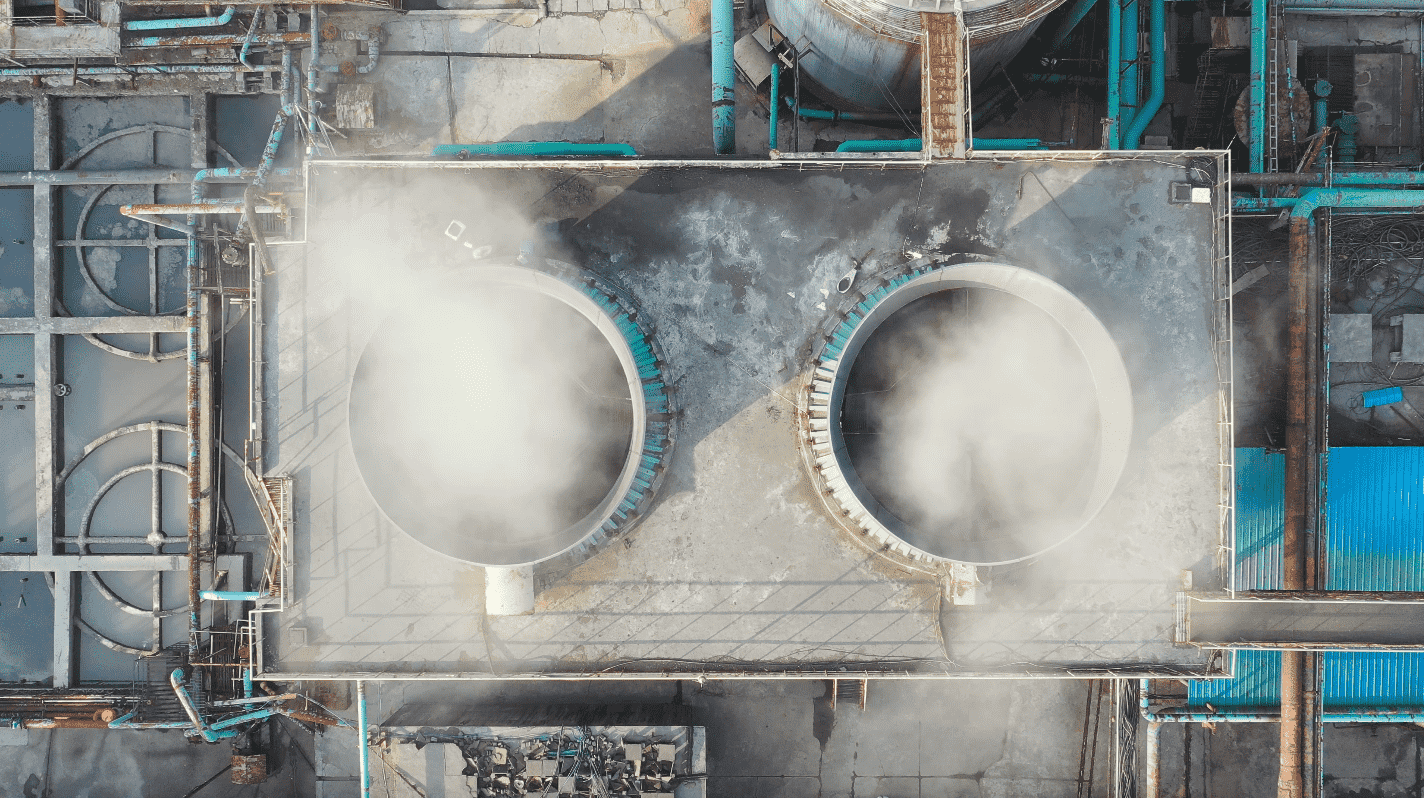Industrial UV prevents Legionella in cooling towers

There are several challenges associated with operating open recirculating cooling systems in the industry. The conditions in these warm and moist systems are ideal for microbiological growth such as Legionella bacteria. These bacteria can, in worst case, cause Legionnaires' disease and Pontiac fever. Therefore, the management of recirculating cooling systems is essential to prevent the spread of Legionella bacteria.
In this article, you will learn more about today's challenges with water purification in the industry and how the growth of Legionella bacteria can be prevented.
Why do Legionella bacteria occur in cooling towers?
Sources of contamination in recirculating cooling systems can be several; make-up water, ambient air, and seepage from processes that all contain nutrients in different forms. The problems are chemically and biologically oriented and are exacerbated by the evaporation of large amounts of water. To avoid high concentrations of minerals and impurities, parts of the water must be discharged. New water is therefore replenished to compensate for the evaporation and emission volumes.
In engineered water systems such as cooling systems, with multiple sources of contamination and favorable temperatures, the conditions for microbiological growth is ideal.
Microbiological growth and legionella bacteria in open cooling systems often pose a risk for the spread of disease-causing microorganisms to both the environment and personnel - therefore it is necessary to prevent the growth of bacteria in these types of systems.
Read more about legionella on the European Centre for Disease Prevention and Control (ECDC) website.
Technology reaching EU's environmental quality targets
A common practice for managing biological growth problems in cooling systems is to add biocides. Depending on the size of the system, large amounts of chemicals may be required to control bacteria levels and reduce the risk of spreading it to the environment. In addition to high operating and handling costs, this also leads to another dilemma: stricter emission regulations and requirements for industries to ensure lower levels of chemicals when bleeding and emptying cooling systems.
An obvious way to work upstream is to reduce chemical use in open recirculating cooling systems. The chemicals then need to be replaced by technology that prevents biological growth - while at the same time doesn't affect the environment or the economy more negatively than the existing solution. It is only then that the technology can be considered BAT (best available technology), and thus contribute to the system reaching the EU's environmental quality goals.
UV instead of biocides
The use of UV equipment as a disinfection treatment in open recirculating cooling systems addresses this fundamental problem and makes it possible to reduce or remove biocides.
UV is an effective disinfection method against various bacteria, viruses, and protozoa. The technology has long been used to, among other things, produce clean drinking water, or keep surfaces bacteria-free. However, the conditions in recirculating open cooling systems with cooling towers differ from these applications and require UV systems and dimensioning that are specifically adapted.
.jpg?width=340&height=340&name=aquaworker%20(2).jpg)
AquaWorker – heavy-duty UV equipment for harsh environments
UV for harsh environments
AquaWorker is a UV disinfection system that meets the high demands of industrial applications. All materials in contact with water are completely corrosion-resistant, which provides a long service life and problem-free operation. Together with a robust design and an automatic cleaning system, very little maintenance is required.
The automatic cleaning system in AquaWorker is the result of years of development, testing and verification of the most difficult water conditions, including scaling such as lime deposits. AquaWorker is adapted specifically for recirculating systems. The main features of the cleaning system are simplicity with few consumables, corrosion resistance, UV resistance, long life, low friction losses, minimal wear on the quartz glass, and the ability to keep away lime deposits.
AquaWorker - industrial UV
- Prevents the spread of Legionella to the environment
- Reduces environmental risks due to handling and release of toxic chemicals
- Lowers operating costs
- Reduces the risk of antimicrobial resistance
- Increases the utilization rate in production due to improved biostability and reliability
- Complies with the Industrial Emissions Directive
- Contributes to the company's environmental improvement work
Read more about how Alleima stops using biocides in cooling system with AquaWorker >>
Guidelines and regulations for Legionella bacteria levels
To reduce the risk of spreading disease-causing microorganisms, there are several guidelines. Among others is EWGLI (European Working Group for Legionella Infections), which is coordinated by ECDC (European Center for Disease Prevention and Control). These guidelines recommend that water samples be taken regularly and analyzed for Legionella levels and aerobic bacteria.
There are also laws and directives for handling environmental toxins. Laws that govern the operator's options to release their wastewater, and laws that govern the handling and use of chemicals. The table below summarizes the most important regulations and what they mean.
| Regulation | Scope |
| EU Water Framework Directive (WFD) | A legal framework to protect and restore clean water in the EU and to ensure its long-term sustainable use. It is complemented by more specific legislation. |
| Industrial Emissions Directive (IED, 2010/75/EU) | The Industrial Emissions Directive aims to achieve a high level of protection of human health and the environment by reducing harmful industrial emissions across the EU. |
| Chemical regulation REACH | A regulation adopted to improve the protection of human health and the environment from the risks that can be posed by chemicals. REACH impacts a wide range of companies across many sectors such as manufacturers, importers, and users. |
| Industrial Emissions Directive (IED, 2010/75/EU) | BREF document (Best Available Technology) to reduce environmental impact from existing and new industrial cooling systems. |
Did you know...The function and effectiveness of a UV device are based on the ability of the UV light to penetrate through water. One aspect concerns the nature of the water, for example, its absorbance values or optical density. Another aspect is related to the quartz glass surrounding the UV lamps. To maintain UV effectiveness in any water system, quartz glass must be protected from contamination, i.e. fouling and deposits. If no measures are taken to prevent this, the UV efficiency will drop immediately, and the function of the UV equipment will be lost. |
Want to know more about AquaWorker? Contact us here and we'll get back to you!

Comment